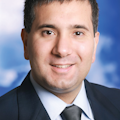How Proposed EU Handling Regulations Will Impact Airports and Operators
In January 2024, the European Union Aviation Safety Agency (EASA) published the first-ever proposal to regulate ground handling across European Union airports. The EU ground handling regulations are expected to be published in late 2024 or early 2025 with a transition period proposed by EASA of three years for implementation after the publication of the regulations.
With this opinion published, air operators and airports must prepare for the effects of the upcoming regulations.
Aircraft operators, both those providing self-handling and those not providing self-handling and relying on contracted ground handling organizations for ground handling services, are affected by the new ground handling regulations, affirm officials at EASA.
“To keep the rules proportional, only self-handling commercial air transport (CAT) operators of complex motor-powered aeroplanes are proposed to be included in the scope of the ground handling regulations,” officials at EASA explain. “Aircraft operators performing self-handling are not expected to duplicate their management system, but only integrate the new ground handling elements for compliance with the ground handling regulations into their existing management system.”
Aircraft operators that do not provide self-handling will also be affected but to a different extent, points out EASA officials.
“The Basic Regulation (i.e., Regulation (EU) 2018/1139 of the European Parliament and of the Council) states that ground handling organizations must provide services in accordance with the aircraft operators’ procedures and instructions,” they say. “However, according to Regulation (EU) No. 965/2012, applicable to aircraft operators, not all aircraft operators are required to develop such procedures: for example, operators performing non-commercial operations with other-than-complex motor-powered aircraft (NCO) do not need to have an operations manual or ground handling procedures.
“This remains unchanged, but in case the ground handling organization providing services to such operators does not have access to the ground handling instructions of those aircraft operators, it will apply its own operational procedures,” EASA officials continue. “The same is expected to happen when aircraft operators use the GH services of a provider at an aerodrome on an ad hoc basis or without a pre-established contract. Although the ultimate responsibility for the aircraft safety remains with the aircraft operator, the responsibility for the safety of the ground handling services provided will be with the ground handling organization in the future.”
According to Monika Mejstrikova, director of ground operations at the International Air Transport Association (IATA), so far the EU air operations regulation has placed a responsibility for the oversight of outsourced ground operations on the air operators, as the final responsibility for the safety of their passengers and aircraft is with them.
“The new regulation has not changed it and we need to avoid audit fatigue – audits coming from regulators, airlines, airports, industry programs – this is simply not sustainable, and more discussion is needed,” she says. “The aviation industry has shown maturity in developing standards and verifying their implementation to improve flight safety. We believe that industry tools and programs can have value for states in the implementation of their State Safety Programs and risk-based oversight systems. The same will happen in the ground operations domain, the way ahead is for more cooperation between industry and regulators.”
For what concerns the aerodromes, today there are many aerodrome operators that provide ground handlings services, and they will also be affected by the new ground handling regulations, according to EASA officials.
“In addition, aerodrome operators have an important role to play in ensuring safety of airside aerodrome operations even when they do not provide ground handling services directly,” say officials at EASA. “The ground handling regulations will better define the interfaces between the relevant stakeholders and will ensure exchange of safety information between them. As in the case of aircraft operators performing self-handling, aerodrome operators performing ground handling activities will not have to duplicate their already existing management system, but only to integrate the ground handling elements required by the new ground handing regulations into their systems and manuals.”
According to Steve Allen, CEO of dnata Group, dnata is fully supportive of EASA’s proposal which marks a significant milestone in European aviation.
“This initiative will enable all industry stakeholders to benefit from the implementation of minimum standards for quality and safety. This also aligns with our ongoing efforts to deliver consistent world-class services at every airport,” he says. “We will continue to engage with EASA and our partners to further enhance safety, operational efficiency and passenger experience throughout the airport journey. We encourage and trust that other aviation authorities will consider adopting the same approach to foster regulatory measures in their respective regions.”
According to Swissport representatives, both airports and airlines will benefit from having recognized minimum standards.
“This will hopefully encourage the removal of airline ground handling differences and establish true standardization across the industry, which will in turn reduce risk across the industry,” officials at Swissport say. “There will be the added benefit that the number of audits can be reduced. It is, however, important that other state regulators introduce regulation that mirrors the EASA requirements.”
About the Author

Mario Pierobon
Dr. Mario Pierobon provides solutions in the areas of documentation, training and consulting to organizations operating in safety-sensitive industries. He has conducted a doctoral research project investigating aircraft ground handling safety. He may be reached at [email protected].
